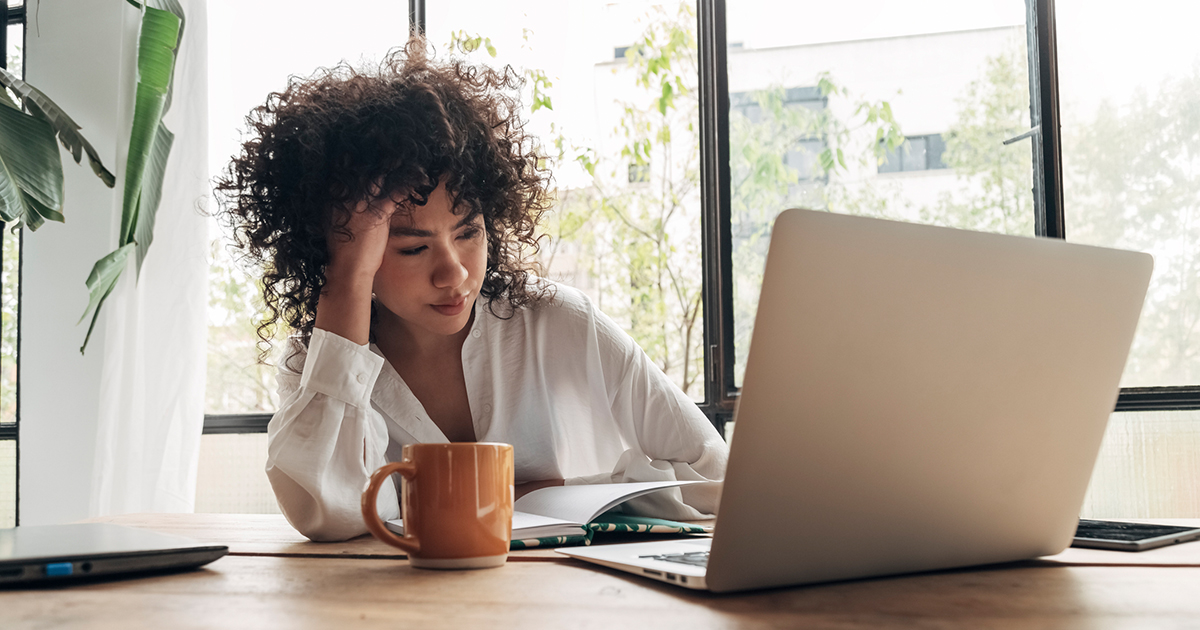The internet has become a huge part of our daily lives. For many of us, that includes the way we shop. Roughly 8 in 10 Americans qualify as online shoppers, according to the Pew Research Center.
And why wouldn’t we be? Online shopping has plenty of perks. First, there’s the breadth of items available. We can buy just about anything with the click of a button. Food. Clothes. Fine Art. Tools. And it doesn’t matter if we prefer big retailers like Amazon or Target. Or smaller ones like Etsy or a favorite indie brand. The options are endless.
Then there’s the convenience. It’s one less trip we have to make to the store. Or one fewer line we have to stand in. If we need a hard-to-find item, it still can be ours in a matter of days, if not hours. Mini cupcake liners with light green strips? A custom dog bowl? Done and done.
Online shopping can also improve quality of life. “Perhaps you have some type of limitation. Or maybe a disability where shopping out in the world is difficult,” says AbleTo Coach Advisor Carolyn Oldham. “Or you may have a need that you can’t easily fill in your area.” It’s a relief to be able to order the items you need and want online.
Still, the ease of online shopping can be a slippery slope. And mental wellness plays a part in how we navigate it. How do we draw the line between wants and needs? What if our shopping habits start to cause problems? Browsing and buying can trigger feel-good hormones in our bodies. We might start to lean on it to cope with tough emotions. Or we might just buy things without thinking.
It’s always worth taking a closer look at our habits, especially as the holidays approach. We’re here to help you take that step with kindness instead of judgment.
First, we’ll look at how mental wellness and shopping habits impact each other. Then we’ll talk about signs online shopping might be a problem. Lastly, we’ll touch on ways we can form healthier habits.
How our well-being and online shopping are related
You’ve likely heard the term “retail therapy.” You may have even joked about it with friends. Science suggests there’s some truth to the idea. Browsing and buying both tell our brains to release dopamine. It’s a feel-good chemical that boosts our mood, but only for a short time. We may then repeat the process to feel the same emotional lift.
People often forget that there are systems working against them, says Oldham. Take marketing tactics like cart reminders or flash sales, for starters. These often promote a scarcity mindset or convince us that an item is more discounted than it really is.
“Many of us turn to these behaviors because a piece of our lives feels overwhelming or out of control,” says Oldham. “This is our way of taking control back.” We might also be trying to cope with a tough emotion, she adds. Maybe it’s stress. Maybe it’s sadness. It might even be some other underlying feeling we can’t quite name.
At its worst, online shopping may then become a chronic coping tool or a compulsion. When that happens, other negative feelings, like guilt, may also creep in. Someone might feel guilt at how much money they’re spending.
Others may feel ashamed when they see items they bought around their home. “There’s a link between how cluttered your physical space is and how overwhelmed your mental state feels,” says Oldham. She suggests asking: Are you trading long-term mental wellness for the short-term high?

Achieve your mental wellness goals
AbleTo programs give you 24/7 access to tools, activities, and content tailored to your needs. Sign up or log in to start exploring.

10 signs that online shopping might be a problem for you
When an action becomes a habit, we spend little time thinking about the ways it impacts our lives. That can mean we have a hard time seeing the bigger picture. It can help to take a step back.
The line between a bad shopping habit and a big problem is going to look a little different for everyone, says Oldham. Here are 10 questions to ask yourself:
- Do you obsess about shopping?
- Do you feel unable to resist the urge to shop online?
- Do you feel a quick rush after you buy things?
- Does the rush you feel after you buy things get shorter each time?
- Have you started having money problems caused by shopping too much?
- Do your online shopping habits make you feel ashamed?
- Do you try to hide your online shopping habits?
- Do you use online shopping to cope with tough emotions?
- Do your online shopping habits start to cause stress?
- Do your online shopping habits cause stress for those around you?
If you said yes to more than half, it’s probably time to give your online shopping habits a second look. (Or maybe you had a strong response to one or more of the prompts. That’s another good gut check.)
Think you might have a true shopping addiction? Check if you’re eligible to work with a caring behavioral coach, licensed therapist, or both from AbleTo.
6 ways to change your online shopping habits
Changing a behavior you don’t like is possible, says Oldham. You may need to do more than one to take control of your situation.
Here are 6 strategies to try:
1. Pinpoint your triggers
“The first step to changing any behavior is figuring out why you do it,” says Oldham. What are your reasons for turning to online shopping? What need are you trying to fill?
Oldham suggests starting with tracking your mood. (The AbleTo app has a mood tracker built in to guide you.) This log can help you look for patterns in your emotions that might influence your online shopping habits. Do you shop more when you’re bored? Lonely? Once you have that info, you can figure out what other action might fill the same need but in a way that’s more beneficial.
2. Learn to sit with tough emotions
Once we find a tool that makes us feel better, we tend to stick with it, even if it doesn’t seem harmful at first. Some people turn to online shopping because of the dopamine we talked about earlier. But buying things doesn’t help us confront the root emotion. And it probably doesn’t get us closer to solving the problem at hand.
There are a couple ways AbleTo coaches and therapists help participants boost their coping skills. For anxiety, the 3Cs can be a great tool. It teaches 3 steps for catching a thought, checking its validity, and changing it. The 3Cs Guided Journal in your AbleTo program can help walk you through the process.
Another option Oldham uses? Body scan meditations. That means taking a few moments to notice how each part of your body feels. Start with your head and move down very slowly to your toes. “This can help people connect how your body feels to the behaviors that you’re working through,” she says. Want a bit of guidance? Try AbleTo’s Checking In with Your Body mini-meditation.
3. Define your needs
A short list of yes or no questions can help curb impulse buys. Stick to 3 or 4 points. A few to try:
- Does it serve a purpose?
- Do I have one already?
- Could I rent or borrow this instead?
This step can serve as a quick gut check. It takes some of the emotion out of shopping. It also makes sure you’ve looked for any extras that might have slipped your mind.
4. Create boundaries
Ideally, you would set a budget. Then you’d stick to it. That’s tough for many of us. But there are lots of other options. You can unsubscribe from email mailing lists for brands. That will limit marketing emails. You could also create a separate email address that you only use to sign up for online shopping accounts. That means all sales and other promotions. All your personal emails and social media would stay separate. That way, you are less likely to get tempted by a sale email if you’re just trying to send birthday wishes to a friend. Need more help? Here’s How to Set Better Boundaries.
5. Make a fun list
Bored? Stressed? Sad? Consider swapping your computer keyboard for a musical one. Or maybe a paintbrush. Or a yoga mat. You could even keep a jar with slips of paper. Then pick a new activity every time you’re tempted to click buy.
6. Break the impulse cycle
Instead of buying things right away, build in a waiting period. Some finance experts advise 3 days; others say as long as 7 days. Add the item you want to your cart or favorite it. Then come back to it and go through your want-versus-need questions.
Give yourself time
It takes time and effort to make any change. “Awareness is the first step,” says Oldham. If you notice online shopping affecting your life in negative ways, you can start to dig deeper. Then you can use the methods above to create healthier habits.
Need help putting these tips into practice?
You may be eligible for virtual therapy, coaching, or on-demand self care from AbleTo. Each program is designed by clinicians and grounded in science. Sign up today and get the support you deserve.
By Sarah Bruning
Sarah Bruning has been a journalist and content strategist for more than 15 years. Her work has appeared in leading publications including Women’s Health, Travel + Leisure, and Cosmopolitan.
Clinically reviewed by Sarah Dolling, LPC.
Stock photo by Daniel de la Hoz/iStock. Posed by models.
The information featured on this site is general in nature. The site provides health information designed to complement your personal health management. It does not provide medical advice or health services and is not meant to replace professional advice or imply coverage of specific clinical services or products. The inclusion of links to other websites does not imply any endorsement of the material on such websites.


